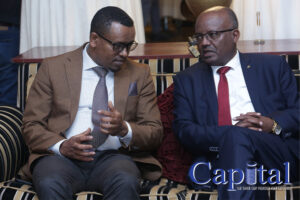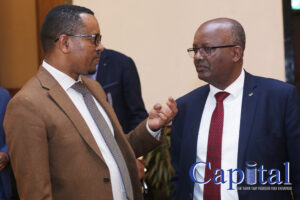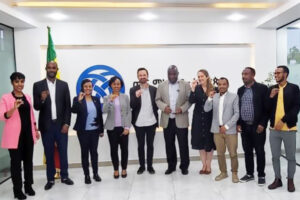The so-called assessment report on China’s Xinjiang region, which was released by the Office of the High Commissioner of Human Rights (OHCHR), was mulled since 2019 without taking Chinese government’s advice or getting authorization from the UN Human Rights Council or having credible basis, the Global Times has learned from related sources.
In response to the “assessment of human rights concerns” in China’s Xinjiang region released by the OHCHR on Wednesday, Chinese Foreign Ministry spokesperson Wang Wenbin told a press conference on Thursday that the “assessment” was orchestrated and produced by the US and some Western forces and was a patchwork of disinformation that serves as a political tool for the US and some Western forces to strategically use Xinjiang-related issues to contain China.
The Global Times has exclusively learned from the sources that the US and some Western forces have firmly seized many important positions in the OHCHR and planted many individuals full of ideological bias to take these positions. Moreover, together with anti-China nongovernmental organizations, they had hyped High Commissioner Michelle Bachelet’s visit to China – from urging her to come to China to criticizing her for going to China and even asking and pressuring her to resign after she had finished the China visit. They also pressured the OHCHR to immediately release “report” on China’s Xinjiang region.
‘A product with three-Nos’
Where does the “report” come from? Why does the Chinese Foreign Ministry call it “a patchwork of disinformation?” The Global Times learned that the OHCHR made the “report” based on overseas anti-China forces’ political needs, and it did not ask for the Chinese government’s advice and was not authorized by the UN Human Rights Council.
Experts on international human rights affairs pointed out that the OHCHR is a department of the UN Secretariat that should work to offer assistance and help to the UN Human Rights Council, including fulfilling its responsibilities in accordance with related UN resolutions and under the authority of the UN Human Rights Council. As a department of the UN human rights body, OHCHR should abide by the UN Charter and universal, objective, non-political principles to promote international exchanges on human rights development and constructive dialogues among member states. It should not interfere with the internal affairs of state members.
However, the “report” made by the OHCHR on China’s Xinjiang region is a “product with no factual basis, no authority and no credibility, analysts said.
The Global Times also learned from the sources that the US and some Western forces offered fund to the OHCHR to deploy remote “monitoring” on some developing countries and made “reviews” or “assessments” on these countries or some regions’ human rights situation by interviewing “victims” or “survivals” or taking dubious pictures.
In these “reports,” even materials from these countries would be selected with bias to cater to the pre-set conclusion – such tactics used by the US and some Western forces have been familiar to the international community, sources told the Global Times.
They also pointed out that the majority of the developing countries have been vigilant to the US and the West which use the OHCHR to attack rival countries, and they have expressed strong opposition. China has made joint statement on behalf of nearly 100 countries at the UN Human Rights Council to urge the OHCHR to strictly obey the UN Charter, defend true multilateralism, respect sovereignty and integrity of member states, work to have constructive dialogue and cooperation and oppose politicalizing human rights issues or adopting double standards.
“The OHCHR has been reduced to an enforcer and accomplice of the US and some Western forces in forcing the developing countries to fall into line with them,” Chinese Foreign Ministry spokesperson Wang Wenbin pointed out at a press conference on Thursday.
Foreign media reports said the OHCHR has been preparing the “report” on Xinjiang since 2019, which analysts said showed that the “report” was not based on High Commissioner Bachelet’s visit to the Xinjiang region in May.
On May 28, Bachelet ended her visit to China, including Northwest China’s Xinjiang region, and issued a statement to represent her and the OHCHR’s stance on the Xinjiang region, during which the UN human rights chief thanked the Chinese government’s invitation and introduced her schedule in Urumqi, the regional capital, and Kashi prefecture in the Xinjiang region.
Bachelet noted that her mission had wide and open discussions with people from different sectors in the region, including prisoners and former trainees of vocational education and training centers and all these meetings were “unsupervised.” Analysts noted such remarks countered the lie of the century that was made by the US and some Western forces on “genocide,” “forced labor” or “forced sterilization.”
By reviewing the timeline of the “report,” the Global Times found that the time slots the OHCHR started in the report coincided with the beginning of the US and Western forces to ramp up efforts in hyping Xinjiang-related topics to attack China on different platforms, including the US, which also proved the “report” was made to serve the purpose to counter China.
From 1990 to the end of 2016, colluded with overseas forces, separatist, terrorist and extremist forces launched thousands of terrorist attacks in Xinjiang, killing a large number of innocent people and hundreds of police officers, and causing immeasurable damage to property. Against such a background, the Xinjiang regional government has taken effective measures to fight against terrorism and extremism and has effectively curbed the frequent occurrences of terrorist activities in Xinjiang.
There have been no terrorist attacks in the Xinjiang region for five years since 2017 and the social security situation has fundamentally improved with the rights to life and development of people of all ethnic groups in Xinjiang being protected, according to the Xinjiang regional government.
However, it was also from 2017, anti-China forces were not reconciled to their failure on stirring up separatism and troubles in the region and turned to spread rumors and tell lies to attack China. The OHCHR also suddenly had interests in “caring about” human rights situation in the region while remained blind to previous frequent occurrence of terrorist attacks in the region, which also raised questions on its true purpose of paying attention to the region, analysts pointed out.
Self-contradicted behaviors reveal malicious purposes
While preparing the anti-China “report,” the US and Western forces also urged the High Commissioner to visit China. Sources told the Global Times that the US and Western forces’ plan was to push the UN human rights chief to conduct investigation in China with presumption of guilt and to further perfect their groundless accusation toward China. However, their plans failed as the High Commissioner did not act as they had expected, which later led to a series of inconsistent farces.
The US and some Western forces had thought that China would not accept the High Commissioner’s visit and therefore they vehemently required the High Commissioner to visit China. By reviewing related reports, the Global Times found that when China and the High Commissioner reached an agreement on her visit to China in May 2022, the US and some Western forces seemed to be in panic and changed their rhetoric by putting forward a bunch of conditions for the visit, stressing “unlimited visit” and even requiring the High Commissioner to cancel the visit.
For example, the US State Department claimed in May that the High Commissioner’s decision to visit China was a wrong decision before Bachelet’s visit to China. Some US politicians and lawmakers also hyped that Bachelet’s visit would be used by China for “propaganda.”
“It is they who urged the High Commissioner to come to China and it is also they who oppose the visit and it is still the same group of people who were not satisfied after the High Commissioner’s visit,” an anonymous source who is familiar with the issue told the Global Times. “Such flips-and-flops of the US and some Western forces, who have no bottom line, are ridiculous and funny.”
On May 23, Bachelet arrived at Guangzhou, South China’s Guangdong Province and had a video conference with foreign diplomats in China. Some Western diplomats accused the UN human rights chief for “indiscreetly” accepting the visit and required her to take “constructive,” “unlimited” investigation in China’s Xinjiang region and released the report immediately.
Diplomats who also attended the video conference meeting told the Global Times that these Western diplomats, with no diplomatic etiquette, had acted arrogantly and bossily. And in facing with such pressure and groundless criticism, Bachelet said that her visit was not an investigation and she would have dialogue with China with open attitude. Some diplomats from developing countries expressed their support of Bachelet’s visit to China, recognized China’s achievements on protecting human rights and encouraged the High Commissioner to have constructive cooperation with China.
As Chinese State Councilor and Foreign Minister Wang Yi had said during his meeting with Bachelet in Guangzhou in May, the UN human rights chief’s visit to China was a trip that would help enhance understanding and cooperation, and clarify misinformation.
In May, when Chinese Vice Foreign Minister Ma Zhaoxu briefed the media on Bachelet’s visit, he said that in Xinjiang, High Commissioner Bachelet was presented with the measures taken and achievements made in the region on counter-terrorism and deradicalization, social and economic development, ethnicity and religion, and protection of labor rights. She also had field trips in Kashi and Urumqi where she had conversations with people from various communities, including ethnic minorities, academics, and representatives of different social sectors.
When realizing that the High Commissioner did not act like what they had planned and expected, the US and some Western forces cannot wait further. US Secretary of State Antony Blinken released a statement to smear China, saying that China manipulated the visit, and Germany’s foreign minister claimed that the visit “fell short of expectation.”
“From these remarks we can see that those who claimed to ‘care about’ the human rights situation in China’s Xinjiang region did not care about the true situation but only ask all parties to cater to their lies and rumors on the region,” sources told the Global Times. “Otherwise, they would attack, smear, pressure and threaten others.”
After Bachelet ended her visit to China, the US, some Western forces and anti-China NGOs started stormy attacks and accused her of not effectively dealing with China’s “human rights abuse.” They not only asked her to resign but also further pressured the OHCHR to immediately release the “report” in an attempt to use the “report” to launch another round of anti-China attacks.
A sheet of waste paper, and the lie of the century bankrupted
The OHCHR “report” was just a sheet of waste paper, and the US and the West’s attempt of using Xinjiang-related issues to contain China will never succeed. Even for such a “report” with no credibility and legitimacy, it dares not to play up the fallacies of “forced labor,” “genocide,” “religious repression,” and “forced sterilization,” which apparently showed that the lie of the century cooked up by the West has bankrupted, and the West has shot themselves in the foot, an expert on human rights affairs told the Global Times, noting that the Facts about Counter-Terrorism and De-radicalization Efforts in Xinjiang, a report issued by the Xinjiang regional government on Thursday, were the true report on the human rights situation of Xinjiang.
The Global Times learned that many developing countries have been voicing their support for China’s legitimate position on Xinjiang-related affairs through joint statements, letters or other means, opposing the attempt of interfering in China’s internal affairs in the name of so-called human rights issues. The number of countries joining in such righteous cause has increased from 50 to nearly 100 and it is continuing to rise.
Sources said that “over 60 developing countries jointly wrote to Michelle Bachelet after she visited China and hailed her visit and the positive achievement reached with the Chinese side, but they also expressed grave concerns as the OHCHR wrote the report without authorization. They believed the publication of the report would undermine OHCHR’s cooperation with member states and strongly called on Bachelet to reject the release of the report.”
Meanwhile, some 1,000 Chinese and foreign nongovernmental organizations jointly wrote to Bachelet appealing to the OHCHR to respect the grave concerns of all the Chinese people and the international community and uphold justice and reject to release the report.
People from Xinjiang also wrote to Bachelet introducing the true situation of Xinjiang in countering terrorism and maintaining stability.
“The US, the West and anti-China forces who have attempted to use Xinjiang-related affairs to suppress China actually made the wrong calculations, and the 1.4 billion Chinese people including 25 million people in Xinjiang will never accept such moves,” the expert said.
Experts said that the real human rights issues that the international community should pay more attention to and urgently address are the genocide of American Indians, the worsening gun violence, the systematic racial discrimination against ethnic minorities, and the vast number of victims trafficked into modern slavery and forced labor in the US, the illegal unilateral sanctions against other countries, and crimes against humanity for the killings of civilians in overseas military operations in regions like Iraq, Afghanistan and Syria.
“The OHCHR should immediately conduct serious investigation and release report on these serious human rights violations conducted by the US and the West so as to give an explanation to the international community and to the victims,” the expert said.










